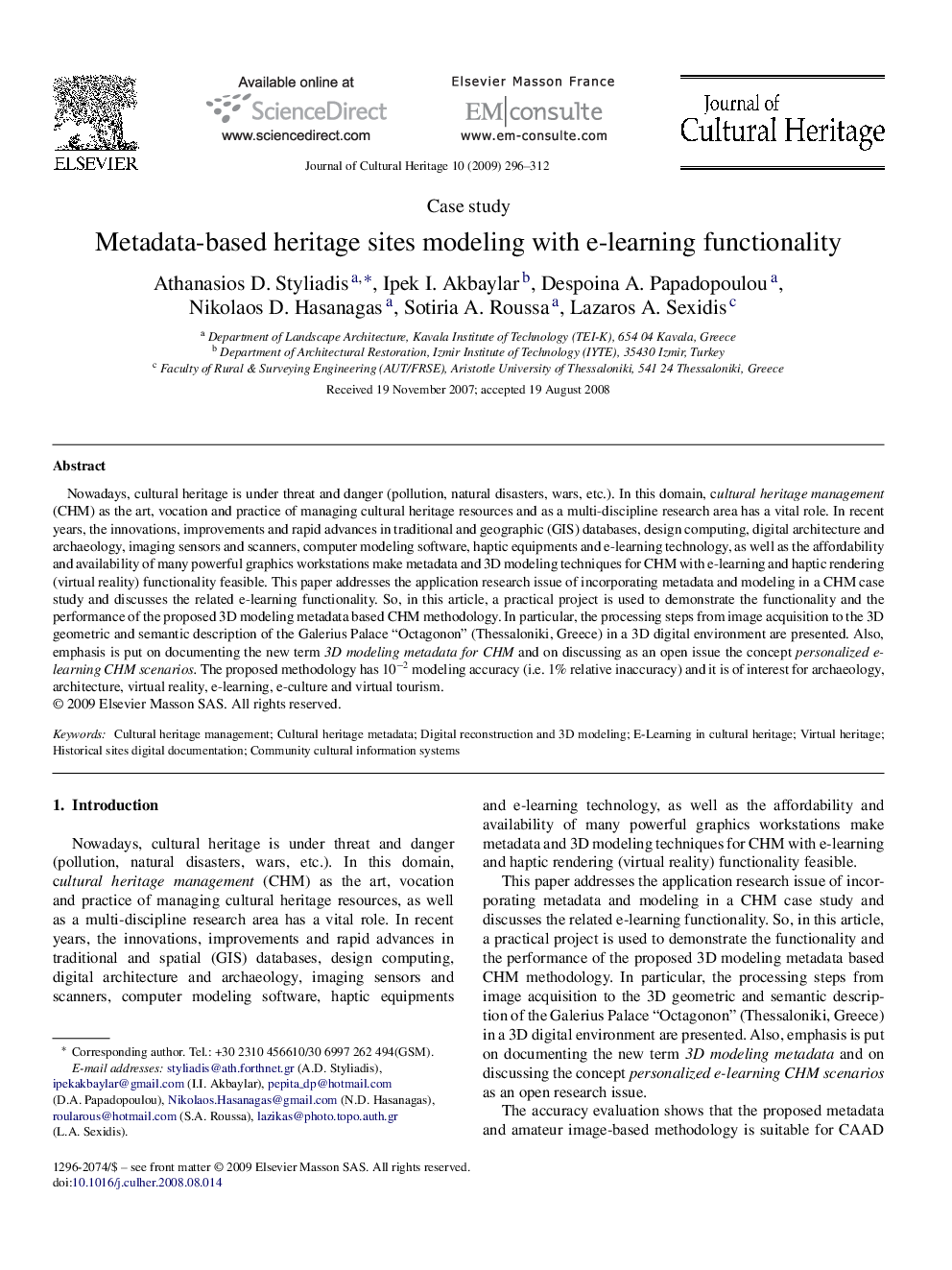| Article ID | Journal | Published Year | Pages | File Type |
|---|---|---|---|---|
| 1038646 | Journal of Cultural Heritage | 2009 | 17 Pages |
Nowadays, cultural heritage is under threat and danger (pollution, natural disasters, wars, etc.). In this domain, cultural heritage management (CHM) as the art, vocation and practice of managing cultural heritage resources and as a multi-discipline research area has a vital role. In recent years, the innovations, improvements and rapid advances in traditional and geographic (GIS) databases, design computing, digital architecture and archaeology, imaging sensors and scanners, computer modeling software, haptic equipments and e-learning technology, as well as the affordability and availability of many powerful graphics workstations make metadata and 3D modeling techniques for CHM with e-learning and haptic rendering (virtual reality) functionality feasible. This paper addresses the application research issue of incorporating metadata and modeling in a CHM case study and discusses the related e-learning functionality. So, in this article, a practical project is used to demonstrate the functionality and the performance of the proposed 3D modeling metadata based CHM methodology. In particular, the processing steps from image acquisition to the 3D geometric and semantic description of the Galerius Palace “Octagonon” (Thessaloniki, Greece) in a 3D digital environment are presented. Also, emphasis is put on documenting the new term 3D modeling metadata for CHM and on discussing as an open issue the concept personalized e-learning CHM scenarios. The proposed methodology has 10−2 modeling accuracy (i.e. 1% relative inaccuracy) and it is of interest for archaeology, architecture, virtual reality, e-learning, e-culture and virtual tourism.
